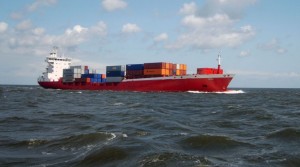Forespar's Point of View
Blogging About Life on the WaterDrone Ships on the Way?
Unmanned freighters appear to be on the horizon, and headed our way. We’ve got unmanned spacecraft and drone aircraft and driverless cars, so why not unmanned ships?
Plans for operating unmanned ships were unveiled last month, when Rolls Royce presented a prototype control center, from which crews of seven to 14 people can control fleets across the globe. The mechanics of remote control are already in hand – many of us have some form of auto-pilot on our boats, so it’s not that much of a leap, despite the instant questions: What if something breaks? What about that satellite glitch – as in recent GPS issues?
Those of us who sail, fish, cruise or all of the above in waters off major ports such as LA, New York, Miami, Tampa, Seattle, etc., take some comfort in knowing that those windows on the bridge have a human or two who are actually looking though them for large and small obstacles.
I’ve even seen a ship coming into Long Beach slow to allow a race fleet to pass in front, because some skippers thought they could make it under his bow – I can tell you that if he hadn’t, there would have a been a couple fewer sailboats on the ocean, and the gene pool would have been a bit smarter. That’s the exception to the rule. As we should know, ships don’t have brakes, and that’s a lot of mass moving, usually faster that we are.
So, let’s pay attention to developments on the concept. Colregs and sanity aside, whether there’s a human at the helm or a drone operator in Finland driving that ship, the “law of tonnage” applies (something that we at Forespar understand). Risking your boat and crew on someone else’s satellite link might not be the best plan for longevity.
Mike Dwight
